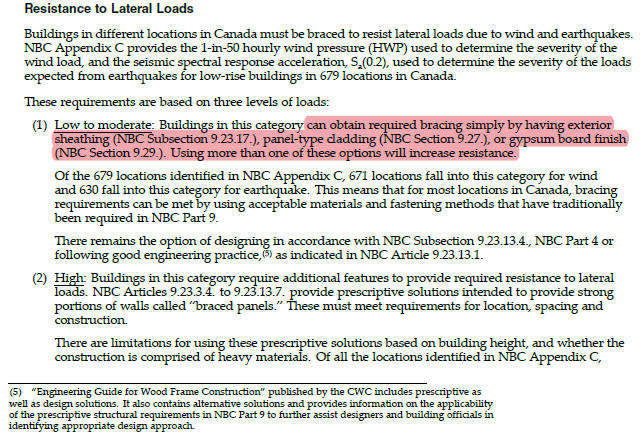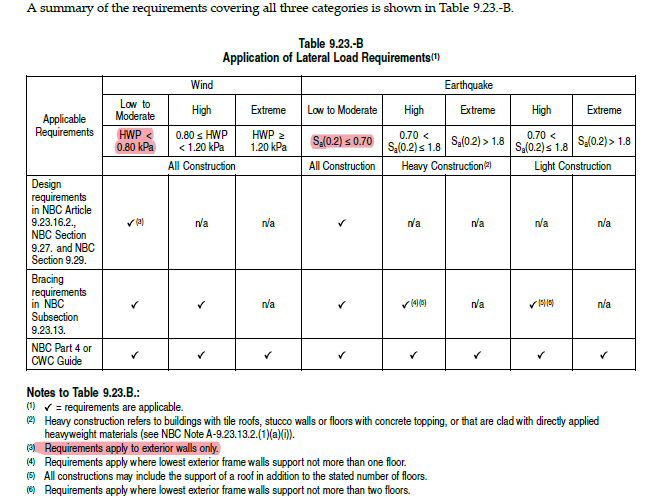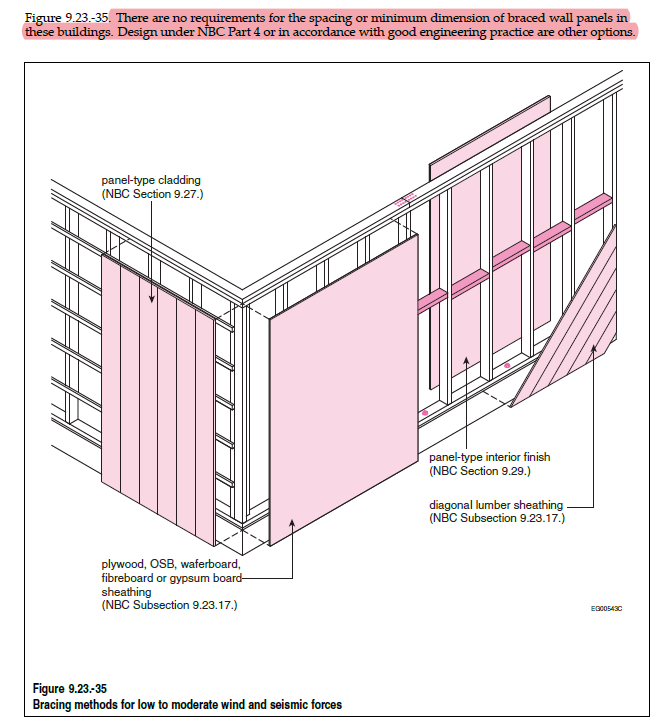Montreal.eng.
Structural
Hi ladies and gentlemen,
I would like to know your opinion and methodology when you get a project where the client wants to increase the size of a window or a door in the exterior walls of the homes, duplex, triplex. etc.
In Canada, houses and small buildings are governed by Part 9 of the National Building Code. I don't know what that translates to in the USA or other parts of the world. Where I work (Montreal, Quebec) the building code describes these areas as low risk of wind and earthquake forces, therefore there are no dedicated LRFS in standard houses and other small buildings that fall in Part 9. The code relies on the redundancy and achoring of the building via prescriptive methods to ensure proper connections. Even as newer homes are more and more "open space" with larger windows, the new version of the Code doesn't mention LRFS for these buildings. However, many municipalities demand an engineers plans for an existant opening surface increase.
My question is would you strictly reinforce for veritical loads and to what extent should an engineer keep using a certain part of a building code? How far would you go with your analysis and design? If a client wants to for example turn a patio door into an opening to welcome an extension or double the size of the windows in the back of the property, would you automatically calculate lateral forces design the new openings as moment frames or is that overkill? What if that property is 100 year old 2-3 storey townhouse? (many buildings being renovated in Montreal are that age and type).
Sorry for the long thread and thanks for your input.
I would like to know your opinion and methodology when you get a project where the client wants to increase the size of a window or a door in the exterior walls of the homes, duplex, triplex. etc.
In Canada, houses and small buildings are governed by Part 9 of the National Building Code. I don't know what that translates to in the USA or other parts of the world. Where I work (Montreal, Quebec) the building code describes these areas as low risk of wind and earthquake forces, therefore there are no dedicated LRFS in standard houses and other small buildings that fall in Part 9. The code relies on the redundancy and achoring of the building via prescriptive methods to ensure proper connections. Even as newer homes are more and more "open space" with larger windows, the new version of the Code doesn't mention LRFS for these buildings. However, many municipalities demand an engineers plans for an existant opening surface increase.
My question is would you strictly reinforce for veritical loads and to what extent should an engineer keep using a certain part of a building code? How far would you go with your analysis and design? If a client wants to for example turn a patio door into an opening to welcome an extension or double the size of the windows in the back of the property, would you automatically calculate lateral forces design the new openings as moment frames or is that overkill? What if that property is 100 year old 2-3 storey townhouse? (many buildings being renovated in Montreal are that age and type).
Sorry for the long thread and thanks for your input.



